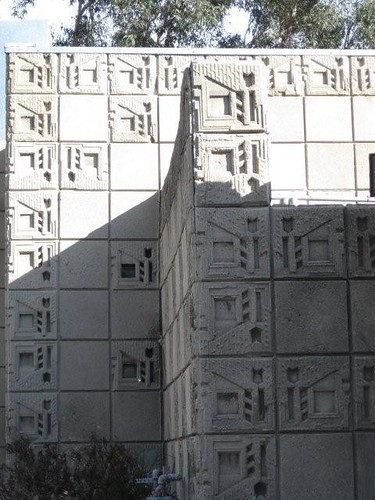Next week I will be giving a 30 minute, hands-on workshop Exploring Basic 3-D Structures in Urban Environments as part of my teaching course at Camberwell College.
In preparation, I have been looking at Peter Skillman's Marshmallow challenge, John Lloyd Wright's wooden Wright Blocks and unusual concrete masonry units.
Frank Lloyd Wright, John Lloyd Wright's father, experimented with constructing textile block houses in the 1920s. The textile blocks were designed to sit on top of one another, without visible mortar joints. Instead, thin concrete and steel rods were run horizontally and vertically 'knitting' the whole structure together. The patterns, made from wood castings could be rotated to make different designs for external and internal use.
LOOM Studio's 12 blocks are a modern version of the 1920s textile block. They are designed to bind with the industry standard breeze block. Similarly to F L Wright's blocks, different patterns can be produced depending on the way individual blocks are positioned.




